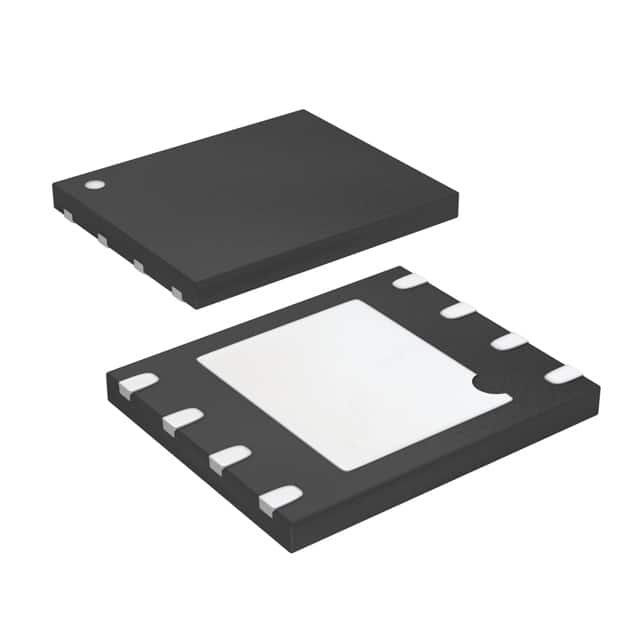Xem thông số kỹ thuật để biết chi tiết sản phẩm.

AT25320AY1-10YI-1.8
Basic Information Overview
Category: Integrated Circuit (IC)
Use: Memory chip
Characteristics: - Non-volatile memory - Serial EEPROM (Electrically Erasable Programmable Read-Only Memory) - Low power consumption - High reliability - Small form factor
Package: 8-pin SOIC (Small Outline Integrated Circuit)
Essence: The AT25320AY1-10YI-1.8 is a serial EEPROM memory chip that provides non-volatile storage for electronic devices.
Packaging/Quantity: The AT25320AY1-10YI-1.8 is typically packaged in reels or tubes, with a quantity of 2500 units per reel/tube.
Specifications
- Memory Size: 32 kilobits (4 kilobytes)
- Interface: SPI (Serial Peripheral Interface)
- Supply Voltage: 1.8V
- Operating Temperature Range: -40°C to +85°C
- Write Endurance: 1 million cycles
- Data Retention: 100 years
Detailed Pin Configuration
The AT25320AY1-10YI-1.8 has the following pin configuration:
- Chip Select (/CS) - Active low input used to enable/disable the chip.
- Serial Clock (SCK) - Input for synchronizing data transfer.
- Serial Data Input (SI) - Input for receiving data from the microcontroller.
- Serial Data Output (SO) - Output for transmitting data to the microcontroller.
- Write Protect (/WP) - Input for write protection.
- VCC - Power supply voltage (1.8V).
- Ground (GND) - Ground reference.
- Hold (/HOLD) - Input for suspending serial communication.
Functional Features
- Byte and Page Write Operations: The AT25320AY1-10YI-1.8 supports both byte and page write operations, allowing flexible data storage.
- Software Protection: The chip provides a write protection feature that can be controlled by the microcontroller, preventing accidental modification of stored data.
- High-Speed SPI Interface: The Serial Peripheral Interface (SPI) allows for fast and efficient communication between the memory chip and the microcontroller.
Advantages and Disadvantages
Advantages: - Non-volatile memory ensures data retention even when power is lost. - Low power consumption makes it suitable for battery-powered devices. - Small form factor enables integration into compact electronic systems. - High reliability ensures long-term data storage.
Disadvantages: - Limited storage capacity compared to other memory technologies. - Slower write speeds compared to some other memory types.
Working Principles
The AT25320AY1-10YI-1.8 utilizes EEPROM technology, which allows for electrically erasing and reprogramming of data. It stores information in a grid of memory cells, with each cell capable of holding one bit of data. The memory cells are organized into pages, and data can be written or read on a byte-by-byte basis.
During write operations, the microcontroller sends data to the memory chip through the SPI interface. The chip then stores the data in the appropriate memory cells. Reading data involves retrieving the stored information from the memory cells and transmitting it back to the microcontroller.
Detailed Application Field Plans
The AT25320AY1-10YI-1.8 is widely used in various electronic devices and applications, including but not limited to: - Consumer electronics - Automotive systems - Industrial control systems - Medical devices - Communication equipment
It is commonly employed for storing configuration settings, calibration data, encryption keys, and other critical information that needs to be retained even when power is removed.
Detailed and Complete Alternative Models
Some alternative models to the AT25320AY1-10YI-1.8 include: - AT25080A-10PU-2.7: 8 kilobit (1 kilobyte) EEPROM with a different package and voltage specifications. - AT25640B-SSHL-T: 64 kilobit (8 kilobyte) EEPROM with extended temperature range and different pin configuration. - AT25256A-10PI-2.5: 256 kilobit (32 kilobyte) EEPROM with higher storage capacity and different package type.
These alternative models offer varying capacities, voltage requirements, and form factors to suit different application needs.
Word count: 511 words
Liệt kê 10 câu hỏi và câu trả lời thường gặp liên quan đến ứng dụng AT25320AY1-10YI-1.8 trong giải pháp kỹ thuật
Sure! Here are 10 common questions and answers related to the application of AT25320AY1-10YI-1.8 in technical solutions:
Q1: What is AT25320AY1-10YI-1.8? A1: AT25320AY1-10YI-1.8 is a specific model of EEPROM (Electrically Erasable Programmable Read-Only Memory) chip manufactured by Atmel.
Q2: What is the capacity of AT25320AY1-10YI-1.8? A2: The AT25320AY1-10YI-1.8 has a capacity of 32 kilobits, which is equivalent to 4 kilobytes.
Q3: What voltage does AT25320AY1-10YI-1.8 operate at? A3: AT25320AY1-10YI-1.8 operates at a voltage range of 1.8V to 5.5V.
Q4: What is the maximum clock frequency supported by AT25320AY1-10YI-1.8? A4: The maximum clock frequency supported by AT25320AY1-10YI-1.8 is 20 MHz.
Q5: Can AT25320AY1-10YI-1.8 be used for storing program code? A5: Yes, AT25320AY1-10YI-1.8 can be used for storing program code as it is an EEPROM memory chip.
Q6: Is AT25320AY1-10YI-1.8 suitable for high-speed data transfer applications? A6: While AT25320AY1-10YI-1.8 supports a decent clock frequency, it may not be ideal for high-speed data transfer applications. Other memory technologies like SRAM or Flash may be more suitable.
Q7: Can AT25320AY1-10YI-1.8 be reprogrammed multiple times? A7: Yes, AT25320AY1-10YI-1.8 is an EEPROM chip, which means it can be electrically erased and reprogrammed multiple times.
Q8: What is the endurance of AT25320AY1-10YI-1.8? A8: The endurance of AT25320AY1-10YI-1.8 is typically specified as 1 million write/erase cycles.
Q9: Is AT25320AY1-10YI-1.8 compatible with standard microcontrollers? A9: Yes, AT25320AY1-10YI-1.8 is designed to be compatible with standard microcontrollers that support SPI (Serial Peripheral Interface) communication.
Q10: What are some common applications of AT25320AY1-10YI-1.8? A10: AT25320AY1-10YI-1.8 can be used in various applications such as data logging, configuration storage, firmware storage, and parameter storage in embedded systems.
Please note that these answers are general and may vary depending on specific requirements and use cases.

